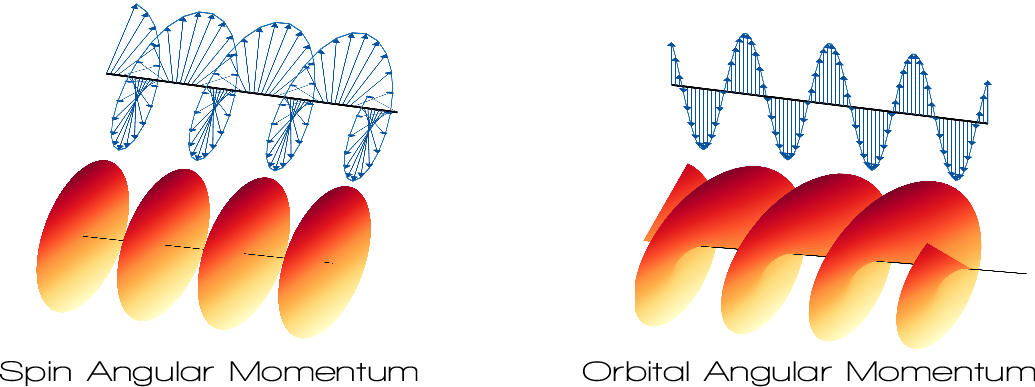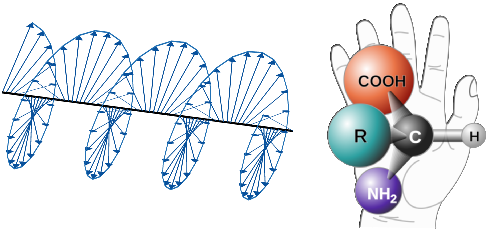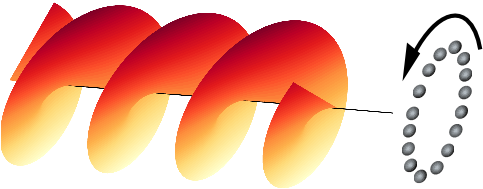In the great majority of the applications of ultrafast visible lasers, only the linear momentum and the energy of the photons are put at play, not their angular momenta. The ultimate goal of Xstase is to open a series of new application areas of these ultrafast light sources by i) upconverting them to the XUV spectral range and ii) using their currently largely ignored degrees of freedom, namely their angular momenta. We will use the spin and orbital angular momenta (SAM and OAM, Figure) of femtosecond light sources to develop two highly complementary approaches. The first one, dedicated to gas phase sample, will primarily inform on molecular potential surfaces through SAM. The second, which will have imaging capabilities with a few tens of nanometers resolution will use light sources with OAM to develop new form of spectroscopies for solid state physics.

Our program will altogether deal with the development and characterization of femtosecond and attosecond sources carrying an angular momentum, and, as far as it becomes possible, to develop associated applications.
A few words about chiroptical effects in the XUV

It has long been recognized that XUV light provides invaluable insights into molecular and atomic physics, in particular in the gas phase for wavelengths corresponding to energies in the tens to the few tens of eV range, which allow direct ionization of the samples. Indeed, the demand for synchrotron light shifts is ever increasing (e.g. 10% more users per year @ SLAC), though the number of facilities also increases (($\simeq$ 50 worldwide). Using XUV light, the readout can be done either on the transmitted photons, or the created charged particles. The ultimate tool in this field became the ion-electron coincidence imaging devices allowing retrieving the full 3D map probability of ejection of the electrons in the molecular/atomic frame. Photoionization being a single photon process, it yields results corresponding to well-established theories and, of the utmost importance, fairly high signals.
In the gas phase, it was verified that the photoionization of chiral molecules by circularly polarized XUV light may yield an asymmetry up to 10% in the number of photoelectrons emitted in the forward and backward directions with respect to the direction of propagation of light (see e.g. Desirs beamline @ SOLEIL, or PECD @ Nothingham). Indeed, alike regular absorption, this process christened PECD relies on a one photon electric dipole transition, way more intense that regular natural circular dichroism. Developping ultrafast XUV sources with a SAM is thus of great promises.
A few words about XUV beams with an OAM

XUV sources carrying an OAM were almost non existent when Xstase was written. The scientific study of HHG with OAM beams was essentially a blank canvas, just started with two publications during the last two years [ Gariepy2014, Zurch2012]. From a theoretical perspective there is no code of HHG taking into account all multipoles and the field's propagation while from an experimental standpoint the progressive transition from the perturbative regime to HHG has not been explored. The HHG characterization that has been reported in the above cited work could be much improved using either interferometric or adapted diffractive schemes as planned in Xstase. The study of photoionization selection rules with XUV OAM beams has so far received only theoretical considerations. During the project, it will be thoroughly tested. Having no well characterized XUV source carrying an OAM, the application field is absolutely clear.